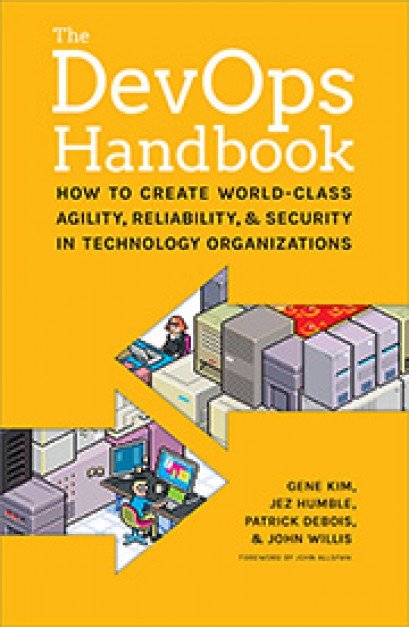30 May 2023

DevOps is an approach that enables faster delivery of software, better collaboration between development and operations teams, and more efficient use of resources. However, it still needs challenges, such as deployment failures, lack of transparency, and difficulty maintaining infrastructure. GitOps, a new approach to DevOps, can help solve these challenges. This blog will discuss GitOps, its principles, and how it can improve DevOps.
GitOps is an operational framework that allows for continuous deployment, automation, and monitoring of infrastructure and applications. GitOps uses Git as a single source of truth for declarative infrastructure and application code. It combines the principles of DevOps, Infrastructure as Code (IaC), and Git workflows to automate and manage infrastructure.
GitOps builds on the principles of DevOps by extending the idea of version control to infrastructure and application code. In traditional DevOps, developers write code and push it to a Git repository, and then operations teams deploy it to production. GitOps replaces this manual process with automated workflows that continuously deploy code and configurations to production.
The four fundamental principles of GitOps are:
GitOps is a declarative infrastructure, meaning the desired state of infrastructure and applications is defined in code. This code is stored in a Git repository and can be versioned, reviewed, and audited.
GitOps uses Git for version control, which provides a complete history of infrastructure and application code changes. This history allows for understanding why a change was made, when, and by whom.
GitOps automates the deployment process using CD pipelines, continuously deploying code to production. The automation ensures that deployments are consistent, repeatable, and error-free.
GitOps provides a complete audit trail of changes to infrastructure and application code. This audit trail can be used for compliance, troubleshooting, and accountability.
GitOps model and practices include:
Git workflows manage changes to infrastructure and application code. GitOps typically uses a pull request model, where changes are made on a branch, reviewed, and approved before merging into the main branch.
CD pipelines automate the deployment process by continuously deploying code to production. GitOps uses CD pipelines to ensure that deployments are consistent, repeatable, and error-free.
Infrastructure as Code is a crucial practice in GitOps. It involves defining infrastructure in code, which can be versioned, reviewed, and audited.
GitOps provides real-time visibility into the status of infrastructure and applications, enabling proactive troubleshooting and faster incident response.
GitOps relies on immutable infrastructure, where changes are made by creating a new container image or configuration file rather than modifying existing ones. This ensures that deployments are consistent and repeatable.
Although GitOps has many benefits, it also presents some challenges. Some of the challenges include the following:
The learning curve for GitOps can be steep, especially for teams unfamiliar with Git workflows and Infrastructure as Code practices.
GitOps requires managing complex and interconnected systems, including CD pipelines, containers, and microservices.
GitOps relies on automation to deploy and manage infrastructure, but balancing automation with control and governance is essential.
GitOps requires managing secrets and ensuring access to infrastructure and applications is controlled and audited.
GitOps may only be suitable for legacy infrastructure designed for automation and may require significant implementation changes.
The key benefits of GitOps include:
GitOps enables faster and more frequent deployments by automating the deployment process.
GitOps enables better collaboration between development and operations teams by using a single source of truth for infrastructure and application code.
GitOps provides real-time visibility into the status of infrastructure and applications, enabling proactive troubleshooting and faster incident response.
GitOps ensures that deployments are consistent, repeatable, and error-free, improving the reliability of infrastructure and applications.
GitOps provides a complete audit trail of infrastructure and application code changes, enabling compliance, troubleshooting, and accountability.
In the event of a system failure, all application services are defined in one place, which reduces MTTR and simplifies the recovery process.
GitOps and DevOps share many of the same principles and practices, but GitOps extends DevOps by using Git as a single source of truth for infrastructure and application code. GitOps replaces the manual process of deploying code to production with automated workflows that continuously deploy code and configurations.
A real-world example of GitOps is the Kubernetes GitOps workflow. In this workflow, a Git repository stores Kubernetes manifests, which are versioned, reviewed, and audited. A GitOps operator watches the Git repository and automatically deploys changes to the Kubernetes cluster.
YNAP, a global luxury e-commerce company with over 4.3 million customers, faced challenges with high infrastructure costs, long deployment times, and a need for more autonomy for developers in their microservices-based platform for Mr Porter.
To address these issues, YNAP implemented Kubernetes and GitOps, re-architecting their main components to run on EKS, Terraform, Helm, and Istio. By storing their infrastructure and configuration settings as code and using Git as part of their workflow, YNAP could automate their deployment pipeline and provide developers with greater autonomy, resulting in increased productivity and faster time to market. Specifically, YNAP reduced the time it takes to build new environments for their development teams from two weeks to less than 5 minutes.
Additionally, the teams can run nightly automatic provisioning of clusters from scratch and deploy an environment through a simple automation suite. These improvements demonstrate the power and benefits of GitOps and Kubernetes for DevOps teams, allowing them to achieve greater consistency, security, and disaster recovery capabilities while saving time and resources.
In summary, GitOps is an operational framework that uses Git workflows, CD pipelines, Infrastructure as Code, tracking and observability, and immutable servers to automate and manage infrastructure and application code. GitOps provides faster deployment, increased collaboration, improved visibility, consistency and reliability, and auditability and compliance. While there are challenges to implementing GitOps, it can be a powerful tool for organisations looking to improve their DevOps practices.
● GitOps is an operational framework that uses Git workflows, CD pipelines, and Infrastructure as Code to automate and manage infrastructure and application code.
● The four key principles of GitOps are declarative, versioned, automated, and auditable.
● GitOps provides faster deployment, increased collaboration, improved visibility, consistency and reliability, and auditability and compliance.
● Challenges to implementing GitOps include the learning curve, managing complexity, balancing automation and control, security, and legacy infrastructure.
● GitOps extends DevOps by using Git as a single source of truth for infrastructure and application code.
● A real-world example of GitOps is the Kubernetes GitOps workflow.

